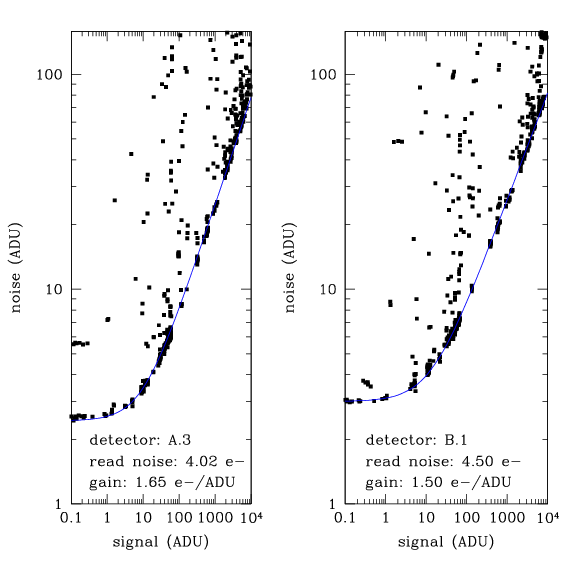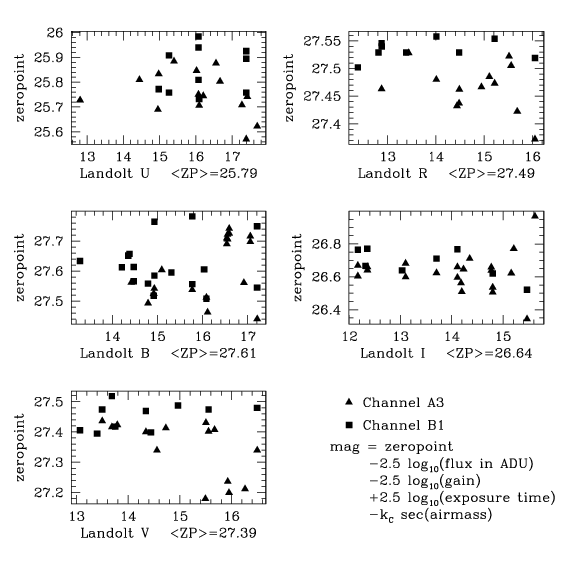![]()
Where R is the read noise (in electrons) and g is the gain (in units of e-/ADU). Gain is the conversion factor between e- and ADU the equation in ADU looks like:
![]()
Note that the gain does not factor out of this relation. This means that if one plots N(ADU) vs S(ADU), it is possible to determine the gain and the read noise. At low signal, read noise dominates, and can be simply read off the graph. At high signal, the read noise can be neglected the gain be determined by fitting. The slope of the relation is still one 0.5 on a log-log plot, but with offset due the gain. The above equation becomes:
![]()
or taking the log:
![]()

